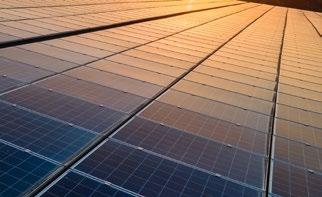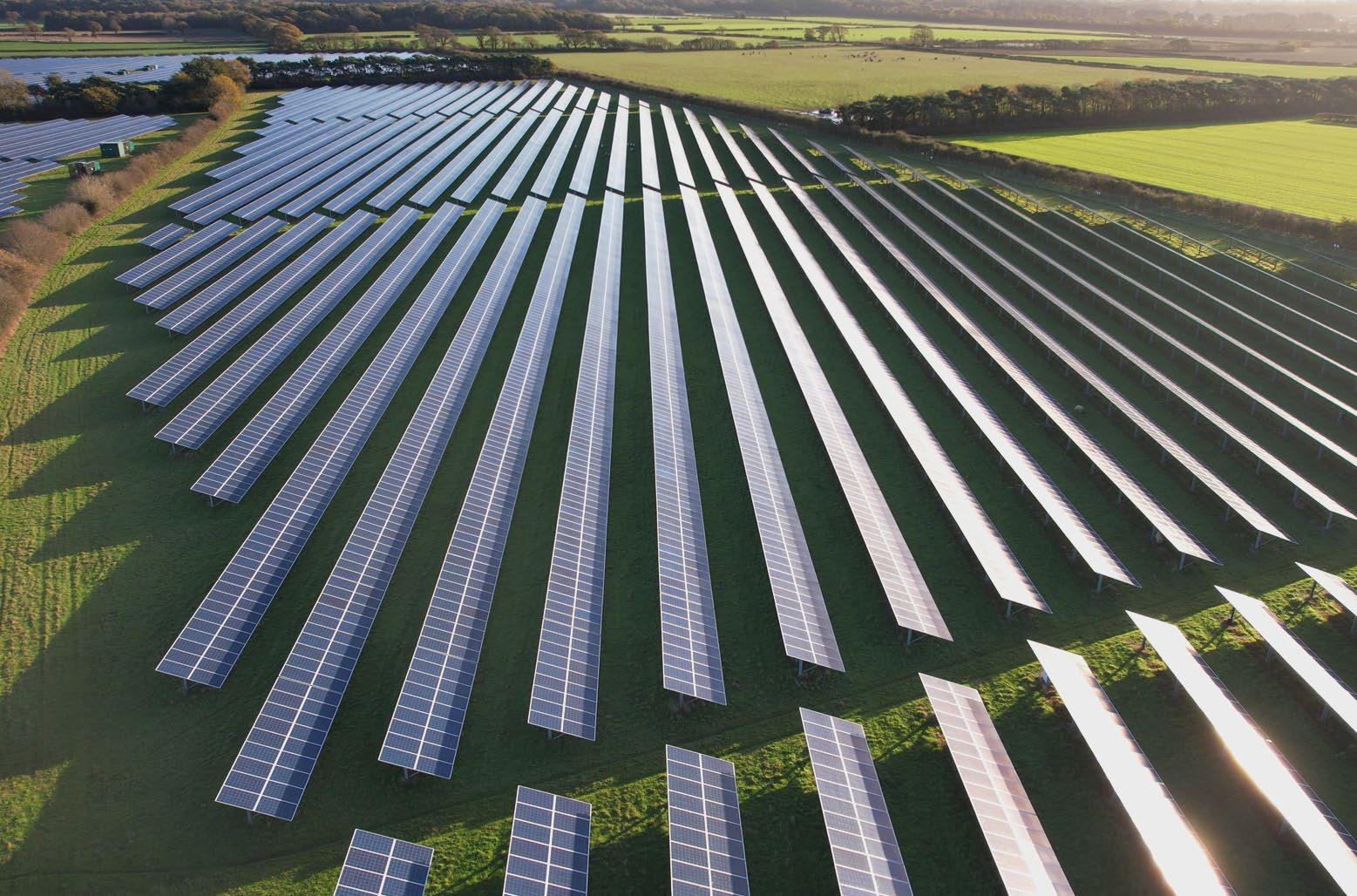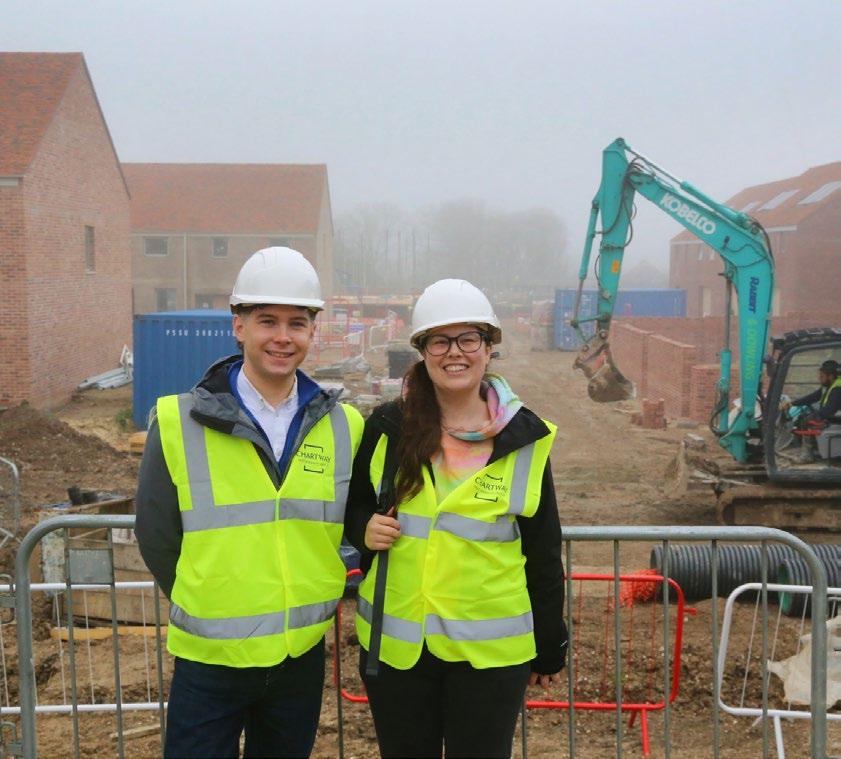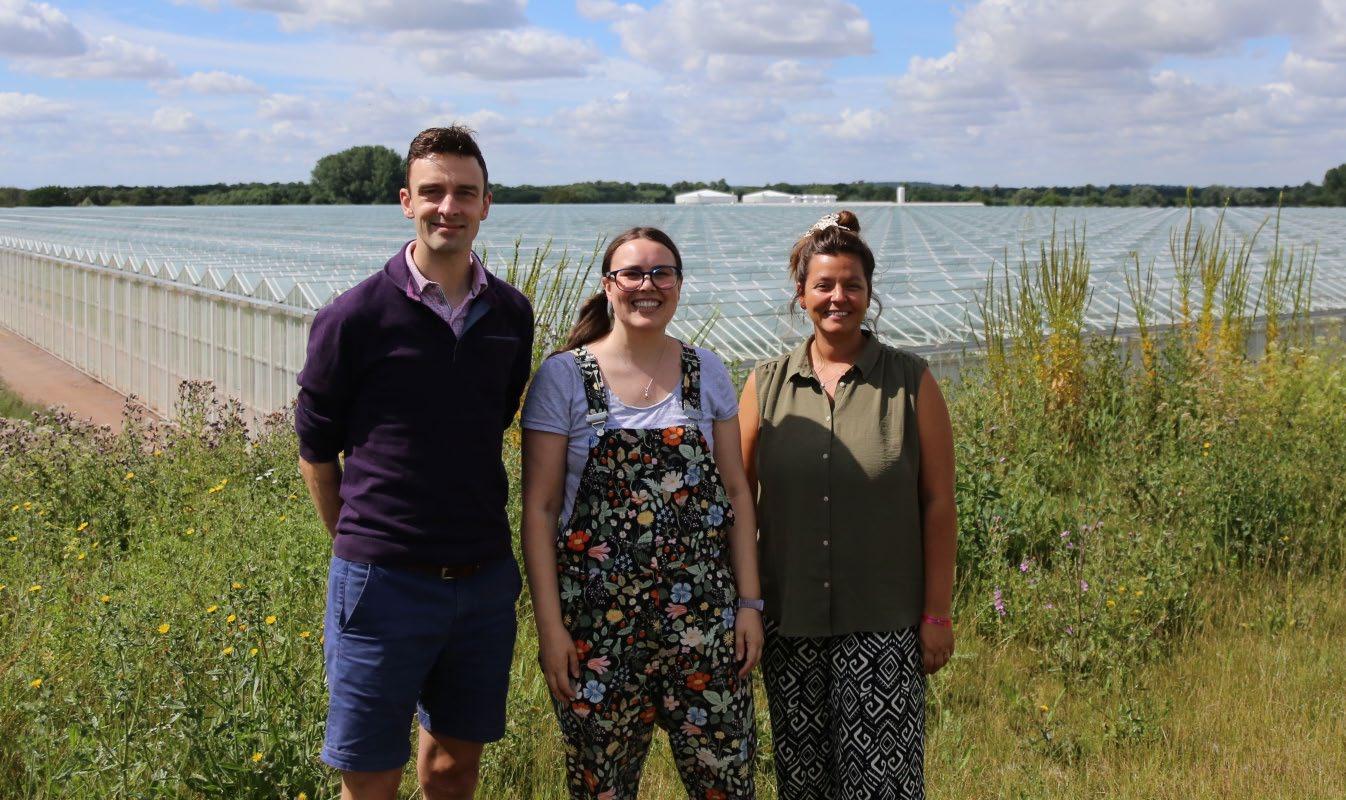












Welcome to the Wiltshire Pension Fund (WPF) Responsible Investment Policy.
Responsible investment is important to us and our stakeholders, as an essential tool in achieving the best long-term risk-adjusted returns and ensuring a sustainable future for the Fund.
This Policy sets out who WPF is as an investor, our beliefs regarding responsible investment, and what we do in this area – our approach to embedding responsible investment at every level in our strategy and operations.
We continue to make significant progress in developing the approach to responsible investment and have set a goal to be an example of best practice in this area. In order to ensure accountability and continued progress, the Committee approves a Responsible Investment Plan each year, assessing progress made so far and setting out goals for the year ahead. The Fund’s Responsible Investment Policy is reviewed annually and is intended to bring all the information on the Fund’s responsible investment activities into one place, to promote transparency and engagement with stakeholders.
Responsible investment is the strategy to incorporate ESG (environmental, social and governance) factors into investment decisions, and influencing companies or assets to achieve better outcomes (known as active ownership or stewardship).
As the Fund is open to new members, who will not be retiring for many years into the future, the Fund has a very long-term investment horizon. The Fund therefore needs to consider long-term sustainability issues, and the importance of engagement with companies in which it is invested, in order to safeguard the investments into the future.
The Fund is a large, diversified investor, with exposure to the global economy. The Fund therefore needs to invest in a way that contributes to the success of the global economy and society as a whole, as this will have a positive financial impact on the Fund’s investments.
Our vision is to deliver an outstanding service to our scheme employers and members

The vision is set to focus the team on delivering outcomes for the employers and members of the pension fund. The vision is supported by 16 outcome-focused strategic vision goals. The goals broadly map to outcomes for employers, members, investments, and governance, however, across the team staff are encouraged to think about how their work maps to different goals.
Strategic goal 11, “Responsible Ownership and Stewardship”, is particularly relevant to responsible investment activities. The goal focusses on ensuring that our responsible investment and stewardship activities are in line with best practice (which also contributes to strategic goal 16, “Compliance and Best Practice”), and that these activities are a central part of delivering an outstanding service to our scheme employers and members.
For these different groups this may mean different things:
• Employers will be best served by the delivery of long-term positive investment returns, which will keep their contribution rates 'Stable and Affordable', in line with strategic goal strategic 1, and responsible investment activities can help preserve capital and enhance value.
• Members may be concerned about how the funds held to pay their pensions are invested, and goal 15, “Transparency and Information Sharing” contributes to this outcome. Responsible investment has a role to play here in the information that is shared with members – for example, the Fund publishes its engagement and voting records online, as well as sharing investment case studies. The Fund also works to make information more accessible to a wider stakeholder group, through the use of one-page factsheets, mini-magazines, and engaging news stories. 1 Stable and affordable contributions 11
Responsible ownership and stewardship 15 Transparency and information sharing 16
Compliance and best practice
In order to help us achieve our strategic goals, and deliver our vision, we need to adopt certain outlooks and ways of working. This is set out in our values, which form part of our culture. The value most relevant to responsible investment and stewardship is "Long Term Thinking", which runs through everything we do. As a long-term investor, we are able to participate in stewardship activities which can add value to the Fund's investments over the long term.
We always act with the long term in mind, whether we are setting our investment strategy, planning improvements, or working towards our net zero by 2050 goal.
The complete set of our strategic goals and values are set out on our website: https://www. wiltshirepensionfund.org.uk/ Our-vision-goals-and-values
The Fund’s investment objectives are to achieve sufficient investment returns such that there are funds available to pay the pensions as they fall due, and to meet the liabilities over the long term whilst maintaining stable employer contribution rates.
Therefore, consideration of all factors (including ESG factors) which could affect the investment returns is a fundamental part of managing the investments and helping to mitigate the risk for employers that contribution rates need to be increased. Responsible investment practices can both help mitigate risks and also enhance returns.
The following investment beliefs set by the Fund relate to responsible investment issues:
The strategic asset allocation is the key factor in determining the risk and return profile of the Fund’s investments.
Investing over the long term provides opportunities to improve returns.
Environmental, Social and Governance factors, including Climate Change are important factors for the sustainability of investment returns over the long term.
In order to protect the Fund’s investments into the future, the Fund supports a global warming scenario of 2°C or lower, and states an ambition to achieve net-zero carbon emissions across all investment portfolios by 2050.
We seek to invest in a way that, where possible, aligns the interests of the Fund with those of the contributing employers and the Fund membership.
The Fund has embedded ESG factors and sustainability within the strategic asset allocation and has set specific strategic allocations to Paris-aligned passive equities, sustainable active global equities, renewable infrastructure and impact affordable housing, in order to manage risk and secure returns into the future.
Investing over the long term means that the Fund can take advantage of opportunities in long-term sustainability trends and/or growth style portfolios, as well as benefit from engagement activities with companies in which the Fund is invested.
The Fund’s status as a long-term investor means that the Fund needs to consider the risks and opportunities presented by wider issues such as climate change and the potential impact on the investments.
The Fund acknowledges that climate change is a material systemic risk which could have significant adverse impacts on the investment portfolio if not managed correctly, or if transition opportunities are not identified.
This policy contains an employer and member engagement plan and the Fund is actively advancing the approach in this area. Member and employer views formed part of the decision-making process when setting the net zero target. A recent survey of the Fund’s membership showed that from the 2,914 responses, 85% of members answered “Yes” or “Maybe” to the question “Is it important to you that the Fund invests in low carbon and/or sustainable assets?”

We wish to invest in a way that delivers competitive risk-adjusted returns from assets which minimise negative impacts on society and the environment and, where possible, make a positive contribution.
Stewardship and engagement are generally more effective tools than divestment in encouraging changes that will help safeguard the Fund’s investments. The Fund values the benefits of working with other investors to strengthen these activities and achieve better outcomes.
Investing with a positive social and environmental impact is an increasingly important issue for investors and can be achieved alongside competitive market returns. Investing with impact can also help incorporate risk and return drivers which would otherwise not be considered. The Fund has made dedicated strategic allocations to UK Impact Affordable Housing and Climate Opportunities. We will continue to consider options for investing with impact in other areas of the strategy.
The Fund is a signatory of the 2020 Stewardship Code and reports annually on work done and outcomes achieved.

In order to ensure that all relevant ESG factors are considered and acted upon, we integrate responsible investment issues across the whole investment process:
This Responsible Investment Policy is an integral part of the Fund’s Investment Strategy Statement.
what we invest in
The Fund incorporates ESG factors in the design of the SAA, for example via specific allocations to Paris-aligned passive equities, sustainable active equities, climate opportunities, and impact affordable housing, and in the selection of investment managers.
The Fund has allocations to asset classes where the positive social and/or environmental impact is part of the investment case. This policy sets out how we view and implement impact investing.
The Fund has a strategy for engagement with the Fund’s membership and employers.
Managers will be held to account for their responsible investment activities, and the Fund will work with the Brunel pool to develop the responsible investment approach.
The Committee receive quarterly reporting on responsible investment issues, and staff have performance goals set which cover responsible investment activities and developments.
We have selected our RI priorities to ensure that we focus on ESG factors which will have the most impact on our long-term riskadjusted returns.
The Fund is a signatory of the 2020 Stewardship Code. This document also includes information on the stewardship and engagement work that we do, which sets out the scope and nature of our work.
The Fund’s main external reporting is via the Annual Report, an annual Climate and Nature Report, annual Stewardship Reporting, impact reporting and other ad hoc reports and publications. We also communicate responsible investment updates via the website, including publishing voting and engagement records, and a holdings transparency tool.
These points are all dealt with in more detail within the appropriate section of this policy.
As mentioned above, this Responsible Investment Policy is an integral part of the Fund’s Investment Strategy Statement, which can be found here
The SAA is reviewed in full once every three years, in line with the Fund’s actuarial valuation. Sustainability is a consideration in this review. In addition, the Fund carries out climate scenario modelling work to ensure that the SAA is robust and best positioned to manage the risks associated with climate change, as well as to take advantage of the investment opportunities generated by the transition to a low carbon economy. Initial modelling was completed in 2020, and this will be re-run in 2025.
The Fund will continue to work to review all asset classes to ensure that climate risk and sustainability are being fully considered.
The total amount currently allocated to sustainable/ low carbon assets over the long term is 28.7% of the Fund (sustainable active global equities (6%), Paris-aligned passive equities (12.5%), climate opportunities (7%), and secured income –operational renewables (3.2%).

–
27.8% allocated to sustainable/ low carbon assets

We focus on the stewardship priorities which will have the biggest impact on our returns, bearing in mind the Fund’s long-term investment horizon and the opportunity to enact change over a longer timeframe. We believe that the best approach is to focus engagement activities on priority ESG factors, since research has shown that this can generate the largest positive contribution to returns and is also a practical approach considering resource limitations.
We look to a variety of sources to inform our priorities, in line with our Fund value of “Data-driven decisions”. These sources include industry research, the largest financial risks as identified by the World Economic Forum, our own climate scenario modelling, consultant views, and many more. We also ask our members and employers what their priorities are – this by itself would not be enough to set a new priority, but it ensures that we communicate with members and employers about issues that are of most interest to them.
Our priorities through an ESG lens are as follows:
• Climate
• Biodiversity
• Affordable housing
• Labour practices
• Equality, diversity and inclusion
• Education
• Health
• Technology & AI
• Strong corporate governance
• Executive remuneration and alignment of interest
We communicate our priorities to our managers every year, through circulation of the Responsible Investment Policy, and we specifically ask our managers to acknowledge our Policy and confirm to us that they will invest in line with it. When selecting new managers, being able to align with our RI Policy is one of the key hurdles that must be passed in order for a manager to be investable. This delivers the outcome that our managers are aligned to our approach.
This policy will now address the environmental and social priorities in more detail.
WPF acknowledges that climate change represents a major financial risk to the investments, and that as part of the Committee’s fiduciary duty, action needs to be taken to properly manage this risk, in order to safeguard the investments but also to be positioned to take advantage of the investment opportunities presented by a transition to a low carbon economy.
When it comes to climate risk, the Fund’s goal is as follows:
Net zero by 2050 for all investment portfolios
To protect the investments from climate change risk, identify opportunities to both invest in and benefit from the transition to net zero, and secure a sustainable financial future for the Fund
Getting to net zero is not simply about decarbonising our portfolios. In order to give ourselves the best chance of success, we tackle this issue from many different angles:

We focus on our top emitters, to deliver maximum impact
We work with our investment managers to evolve their approach
We have a plan to divest from all fossil fuels by 2030, and ensure all remaining holdings can transition
We allocate money to renewable infrastructure and climate solutions
How we manage climate risk
We investigate significant sectors, to ensure we are investing in forward-looking companies
We have developed a framework to understand our exposure to biodiversity risks
We transparently report on the work we have been doing
Through this work, we aim to achieve real World change, and create a sustainable future for our Fund.
Each year, we publish a Climate and Nature Report, which contains information to help illustrate the wide range of work that we do, alongside monitoring our decarbonisation progress.

In March 2021, in the Fund’s best financial interests, the Committee set a goal to decarbonise from our baseline position at 31 December 2019, and achieve net zero by 2050 for the investment portfolios. Our climate risk work is based on scenario modelling, which enables us to put numbers around the risk, and make decisions based on what is the best financial outcome for the Fund. Managing climate risk is about more than just decarbonisation, we also focus on driving positive change through engagement, and identifying the investment opportunities which are presented by the transition to net zero.
We use the carbon footprint metric to measure progress against the targets. This is our preferred metric due to the link to real world absolute emissions, and it also provides good comparability with other investors.
The Fund's baseline position for decarbonisation is calculated as follows:
Calculation date: 31 DECEMBER 2019
What has been included?
Carbon footprint (tCO2e/$m investment – measures the emissions impact of a portfolio per $1m invested):
39.9 TCO2E/ $M INVESTMENT
We work with our investment consultants to establish and review appropriate targets in order to achieve our net zero goal, which are set out below as our Climate Commitments. We report on our progress against our commitments every year in our Climate and Nature Report. As part of the overall transition plan, we have carried out significant work towards setting a more detailed, bottom-up implementation plan. This bottom-up plan includes analysis of the transition alignment of the portfolio, as well as identification of individual stocks for prioritisation of engagement activities. We also perform our own analysis of holdings for engagement prioritisation, our “Top 10 Emitters”.
1
We commit to a whole Fund carbon reduction target of 50% by 2030
We commit to a listed equities carbon reduction target of 43% by 2025 and 69% by 2030
We commit to allocating 30% of the Fund to sustainable/low carbon green assets by 2025, and 35% by 2030 (as measured by the long-term strategic asset allocation).
4
We commit to all of our property investments being aligned with a net zero by 2050 target by 2030.
5
We commit to engaging with our top 10 emitters and reporting transparently on our findings.

We have adopted the recommendations of the Task Force on Climate-related Financial Disclosures (TCFD), and include this information in our Climate and Nature Report. This reporting sets out how the Fund manages climate change risk, from the perspective of governance, strategy, risk management and carbon metrics. Progress against the Fund's targets is reported to the Committee on an annual basis and an update is included in our Climate and Nature Report. In this report you can find investment case studies, examples of engagement work, information regarding how we're managing climate risk, as well as key facts and other information.
The Fund has made significant progress towards defining how to set specific net zero targets for other asset classes (i.e. not listed equities), and this is still an ongoing piece of work. Considerations across other asset classes is detailed in full in the Climate and Nature Report
Due to the nature of investment pooling, there can be barriers to aligning climate change policy at the pool with that of our own, due to the fact that pooled portfolios have to contain the same holdings for all client funds, and a consensus position needs to be sought. We communicate our position to Brunel and other investment managers and continue to work with Brunel and other client funds in order to advance the approach in this area.
The Fund will continue to monitor Brunel’s progress on implementing its policy objectives and will work with them to achieve our collective climate change ambitions. If the Fund does not feel action is progressing at an appropriate pace, the Fund will seek to address this with the other partner funds and Brunel.


This is most often spoken about with regard to fossil fuel investments, and there is significant pressure on LGPS funds to divest from all fossil fuel companies. This pressure comes both from scheme members and wider campaigns. We believe that selective divestment from fossil fuel companies which are unable and/ or unwilling to transition is an important tool, alongside active engagement, in ensuring that we are able to achieve our net zero goals.
Divestment = the intentional act of moving money and investments out of a company.
As a long-term investor, WPF’s goal is to protect the investments from climate change risk, and safeguard the financial future of the Fund. We support a global warming scenario of well below 2°C, and have an ambition to achieve net-zero carbon emissions across all investment portfolios by 2050. We do not see a long-term place for fossil fuel investments in our portfolios, and will work towards being fully divested from these companies by 2030. In the short term we will continue to monitor our holdings in these companies, to ensure that any such investments are helping to finance real-world change Alongside this, we will continue to invest in renewable infrastructure and climate solutions, to help create sustainable replacements for traditional fuel sources, and contribute positively towards ensuring energy security. This approach aims to ensure that the Fund’s risk of exposure to stranded assets is well managed, and that the Fund can benefit from the investment opportunities presented by the transition to a low carbon economy.
Through the Fund’s allocation to the Paris-aligned passive portfolio, some companies are removed from the investable universe if they meet certain criteria. These are as follows:
Companies with:
• 1 % or more of revenues from exploration, mining, extraction, distribution or refining of hard coal & lignite
• 10 % or more of revenues from the exploration, extraction, distribution or refining oil fuels
• 50 % or more of revenues from the exploration, extraction, manufacturing or distribution of hydrocarbons, hydrogen and carbon monoxide mixtures present in gaseous state
Electricity producers with:
• Carbon intensity of lifecycle Greenhouse Gas (GHG) emissions greater than 100 gCO2e/kWh (50%+revenues)
Any companies found or estimated by them or by external data providers to:
• Significantly harm one or more of the environmental objectives under the “Do No Significant Harm” definition
• Currently this includes Pure play Coal and Pure play Tar sands companies
The Fund uses these exclusion criteria from the Paris-aligned benchmark as its definition of “fossil fuel companies”, and monitors holdings on this basis. This is reported annually, as part of the Climate and Nature Report

Biodiversity is rapidly gaining attention as an area that investors should be considering. The World Economic Forum’s Risk Report 2024 puts “Biodiversity loss and ecosystem collapse” as the 3rd biggest economic risk facing the world over the next 10 years. The UN has published a report into this area, entitled “Stepping up on Biodiversity, what the Kunming-Montreal Global Biodiversity Framework means for responsible investors”. Our net zero by 2050 target and wider investment beliefs mean that this is an area where we need to take action.
The most relevant investment belief to this subject area is as follows: Environmental, Social and Governance factors, including Climate Change are important factors for the sustainability of investment returns over the long term
Biodiversity is closely linked to climate change, and scientists believe that there can be no net zero future without a reversal of biodiversity loss.


At this stage, this is an emerging area in the industry. The Taskforce for Nature-related Financial Disclosures (TNFD) provides a framework for reporting against how organisations manage nature-related risks. Also in development is Nature Action 100, a global investor engagement initiative focused on driving greater corporate ambition and action to reverse nature and biodiversity loss. The Fund supports these initiatives and will use them as part of our own framework to understand and manage this risk.
In order to identify key areas to look at, we focus on investments in sectors which are particularly impacted, as well as looking at the key drivers of biodiversity loss, as defined by IPBES (the Intergovernmental Science-Policy Platform on Biodiversity and Ecosystem Services). These are as follows:
We approach biodiversity risk in the following ways:
UNDERSTANDING OUR EXPOSURE TO RISKS
• We are developing our use of frameworks such as TNFD to support us in our understanding of this area.
• We are working with the Brunel pool and our legacy managers to understand where we are exposed.
• Our strategic allocation to renewable infrastructure and climate solutions has the scope to contain nature-related investments, providing the opportunity to earn competitive financial returns whilst also delivering positive impacts to nature.
• We are focusing on the high-impact sectors of agriculture, food & drink and construction in terms of our current holdings.
• Our stewardship efforts will focus on the 5 main drivers of biodiversity loss.
In order to assess and prioritise social factors, we have developed a framework of which social factors we believe have the more significant potential impact on our long-term risk-adjusted returns.
The Social factors we focus on (and why) are as follows:
There is a clear supply/demand imbalance of affordable homes in the UK. This presents an investment opportunity from the need to address this social issue. We currently allocate 5% of our Fund to UK affordable housing.
Promoting education will lead to a more skilled workforce and benefit the economy. This links to professional training and development, including re-skilling as a part of the transition to a low carbon economy.
Health is a wide-ranging theme encompassing worker health, consumer health and community health. The importance of good health in a productive economy is clearly linked to our investment portfolios.
Research has shown that more diverse boards lead to better financial outcomes. As well as being an important investment theme, EDI matters in terms of how we run our operations.
Adverse outcomes of artifical intelligence technologies has been identified as a top 10 risk over the next decade by the World Economic Forum. Cyber risk is also important to understand and manage
Poorly managed labour practices can introduce risks of indistrial action, human rights abuses, and reputational damage, all of which are clearly risks to our investments.
We view the first three factors (affordable housing, education and health) as potentially investable areas, with all six factors being priorities for stewardship and engagement across all our portfolios.
We report on our work done to invest in and engage on these social factors in our Spotlight on Social Report


Our investment belief regarding impact investing is as follows:
We wish to invest in a way that delivers competitive risk-adjusted returns from assets which minimise negative impacts on society and the environment and, where possible, make a positive contribution.
Impact investments are investments made with the intention to generate positive, measurable social and environmental impact alongside a financial return (as defined by the Global Impact Investing Network). We view impact investments where the positive impact generated is integral to the investment case as compelling opportunities for the Fund. At no point past or present have any investment decisions been made by WPF which the Committee believe would compromise on long-term risk adjusted returns.
The Fund is a member of Pensions for Purpose, and an adopter of the Impact Investing Principles for Pensions. There is more info on how we use this in the section on “Wider Initiatives” later in this policy.
The Fund has a strategic allocation of 5% to Impact Affordable Housing, where the return characteristics are a match for our requirements, and in addition the anticipated positive social impact is an integral part of the investment case. This is due to a shortage and high demand for more affordable housing in the UK, creating a compelling business case for investment. We monitor both the investment performance and the social and environmental impacts of this portfolio, and report annually on our progress in an Affordable Housing Impact Report



The Fund has a strategic allocation of 7% to Climate Opportunities, a portfolio which has an objective to earn superior risk-adjusted returns by investing in a diversified mix of assets which have the intention to deliver real World change by actively supporting the transition to a low carbon economy. This portfolio contains assets ranging from renewable infrastructure (delivering an income stream from greening the grid) to investments in start-up companies whose business case is based around their ability to deliver material carbon reduction.
Looking at the impact of the Fund’s investments can be very helpful in identifying new investment opportunities and helps to identify ways that the Fund can reduce exposure to risks.
The Committee has considered the United Nations Sustainable Development Goals (UN SDGs) through an investment lens. Although the SDGs are targeting broad economic goals and have not been specifically developed as an investment framework, as a large and diversified investor the Fund has exposure to the global economy, and the intended outcomes of the SDGs would benefit the Fund’s investments and the sustainability of investment returns into the future. The exercise of considering the SDGs also assisted the Fund in focussing on relevant investment risks and opportunities. As a result of this analysis, the Fund sees the strongest investment case for supporting the following SDGs, and prioritises these areas when discussing engagement activity, investment opportunities and risk mitigation with investment managers:
• Climate [SDGs 13 Climate Action & 7 Affordable and Clean Energy]
• Economic growth [SDGs 8 Decent Work and Economic Growth & 9 Industry Innovation and Infrastructure]
• Education [SDG 4 Quality Education]



The Fund does not exclude investments in order to pursue boycotts, divestment and sanctions against foreign nations and UK defence industries, other than where formal legal sanctions, embargoes and restrictions have been put in place by the Government.
In order to ensure that our impact portfolios are delivering against their strategies, we report on selected key metrics to demonstrate the impact being achieved. Reporting will be published on our website
The majority of the Fund’s assets are now held through the Brunel Pension Partnership (“Brunel”). Through Brunel, the Fund is able to work with the other 9 shareholder client funds to help advance responsible investment policy. Responsible investment is written into the portfolio specifications and is a key topic of discussion at the client group.
For all managers, responsible investment is a standing item on the agenda for all quarterly monitoring meetings. The Fund regularly questions the managers of these investments on specific holdings or on relevant themes and topics.
The Fund has a fiduciary duty to act in the best interest of its members and therefore we expect all of our investment managers to take account of financially material ESG factors in the selection, retention and realisation of investments as an integral part of the normal investment research and analysis process. The Fund believes that taking account of such considerations forms part of the investment managers’ normal fiduciary duty.
Stewardship means using our influence as investors to deliver better long-term risk-adjusted returns for the Fund, as well as better outcomes for our stakeholders, the economy, the environment and society.
In practical terms, this means the following:
• Building a strong link between our beneficiaries and our investments.
• Taking stakeholder views into account.
• Reporting on our activities and holdings in a clear and transparent manner.
• Using our investment activities to support delivery of our vision as a Fund.
• Being actively involved with our investments, in order to support positive change and deliver better outcomes, for example participating in engagement activities, exercising our voting rights, and taking the time to understand what risk and opportunities we are exposed to.
• Collaborating with other investors to achieve our collective goals.
The Fund is a signatory of the 2020 Stewardship Code. Full reporting in line with the Code is published annually, which sets out the specifics of what we do and why, and the outcomes that have been achieved as a result of the work. A mini-magazine, Responsible Investment and Stewardship Highlights, is published alongside the full report, to bring the Fund’s approach to life for stakeholders, with examples and case studies to put the policy into context.
As part of our stewardship and engagement work, we carry out the following activities:
• Communicating the Fund’s engagement priorities to Brunel and the legacy investment managers
• Encouraging legacy investment managers to improve disclosure rates on their holdings, develop new ESG reporting, set climate-related targets etc.
• Collaborating with the Brunel pool and partner funds in the development of responsible investment policy, including engagement activities, and climate reporting and targets.
• Challenging Brunel and the legacy managers on holdings which do not appear to be aligned with the Fund’s overall objectives, for example this could include challenging the investment case for holding a fossil fuel company, a company with high carbon emissions, or a company which appears to present other ESG factors, such as a fast fashion company. Please note these examples are by no means exhaustive.
• Requesting and scrutinising case studies of engagement activities, to determine their effectiveness.
• Challenging Brunel and the legacy managers on their own approach to ESG integration, including but not limited to climate risk.
• Requesting ad-hoc information, which may include things like responses to events in the press, customised reporting, voting information, detailed investment case studies, exposure to various sectors/themes etc.
• Conducting site visits to certain types of investments in order to engage operationally and obtain evidence and examples of sustainable practices, management of business risks, and other financial factors.
• Holding Brunel and the legacy investments managers to account on other topics relating to engagement activities.


For full transparency, as well as the annual Stewardship Reporting in line with the 2020 Stewardship Code, we publish quarterly voting statistics and highlights, and a quarterly report into our equity holdings
As set out in the Fund’s investment beliefs, the Fund values the benefits of working with other investors to achieve better outcomes. The following is a list of organisations and/or initiatives which the Fund supports.
The Fund is a shareholder and client of the Brunel Pension Partnership. The Fund is able to be involved in setting portfolio specifications, approving manager selection, and monitoring ongoing performance of portfolios. Responsible investment is completely embedded and considered at each of these stages of the process. The Fund also engages through the client group, the responsible investment sub-group, and ad hoc communications from Brunel on responsible engagement initiatives, for example engagement and voting matters.
The Fund is a member of the LAPFF, to enable it to act with other local authorities on corporate governance issues. LAPFF’s mission is to protect the long-term investment interests of beneficiaries by promoting the highest standards of corporate governance and corporate responsibility amongst investee companies.
Details of their activities can be found on this link: http://www.lapfforum.org/about
The Fund publicly supports TPI, which is a global, asset-owner led initiative which assesses companies' preparedness for the transition to a low carbon economy. The TPI tool assesses progress against companies and sectors to measure the level management quality and carbon performance, to aid in risk assessment.
More information can be found here: https://www.transitionpathwayinitiative.org/
The Fund is a member of the IIGCC. As part of its membership the Fund benefits from educational materials, webinars, and the net zero framework, which will help the Fund achieve the target of net zero by 2050.
More information can be found here: https://www.iigcc.org/
The Fund is a signatory of Climate Action 100. This is an investor-led initiative to ensure the world’s largest corporate greenhouse gas emitters take necessary action on climate change. This initiative enables the Fund to support engagement activities which promote the target of net zero by 2050.
More information is available here: https://www.climateaction100.org/
The Fund is a member of Pensions for Purpose, and has adopted the Impact Investing Principles for Pensions. The principles provide a useful framework for demonstrating how we look at impact investing, from setting objectives to working with consultants and investment managers, using our voice to make change, and reviewing our impact.
More information is available here:
Impact Investing Principles for Pensions | Pensions For Purpose
Pensions for Purpose provides a valuable resource to learn more about certain topics in the impact investing area, and a forum to interact with other investors and managers to drive progress.
Just transition means not transitioning to a low carbon economy at any cost, but doing so whilst also ensuring that this is done in a socially responsible way, i.e. in a way which is fair to all. The Grantham Research Institute on Climate Change and the Environment at the London School of Economics and Political Science have put together a comprehensive guide as to what this means for investors, and what action can be taken. The Fund has signed a statement of support, and uses the guide to help embed this goal within the Fund’s policies, and help hold our investment managers to account.
More information is available at the following link: https://www.lse.ac.uk/granthaminstitute/investing-in-a-just-transition-global-project/
We are a member of FAIRR, which is an investor network that raises awareness of the environmental, social and governance (ESG) risks and opportunities in the global food sector. We find the research and data provided by FAIRR very useful when we are looking into investment themes such as health and regenerative agriculture, and exploring the risks posed to our holdings in the food and agriculture sectors.
You can find out more here: FAIRR Initiative – A Global Network of Investors Addressing ESG Issues in Protein Supply Chains


The Fund considers that transparency on its actions, particularly with regard to responsible investment issues, is important, and engagement with the scheme employers and membership is a key part of this. The topic of investments is quite technical, and responsible investment issues can be nuanced, so it is important to educate members as well as asking for opinions.
Why might the Fund engage with employers and members?
• Employers – funding is achieved by a balance of employer (and employee) contributions, and investment returns. Therefore employers, as budget holders, will be interested in how the investments are managed, as this could have an impact on the contribution rates they need to pay.
• Members – members benefits are set in law and are not impacted by the investment returns. However, members may have personal beliefs and views on how the investments are managed. Therefore, keeping members informed and finding ways to represent their opinions is important.
The Fund seeks to keep members and the general public informed via regular reporting (details of reporting later in this Policy). The Fund makes use of the news section of the website to share short posts, including responsible investment content. We will continue to publish press releases to communicate major strategic decisions.
In order to incorporate the views of the employers, the Fund will consult with employers on amendments to the ISS. There are two employer representatives on the Committee, who are actively involved in promoting employer engagement. The Fund has established an employer forum, to discuss relevant strategic issues, including investment policies and strategies.
The Fund will use its website as a way to communicate information and keep members and employers informed. The Fund will continue to develop methods of accessible communication.
The Fund has used surveys to collect the views of employers and members, and has used the results of these surveys to develop the approach to member and employer engagement. Although the views of members and employers alone would not be used to drive the strategy, they are considered by the Committee alongside other information as part of a full picture. The Fund’s investment strategy is set in the best financial interests of the Fund, but can also, where possible, reflect the wider goals and philosophy of the employer organisations and Fund membership.
Reporting is important in order to measure and monitor progress against objectives, and for transparency and openness with stakeholders. The Fund’s current reporting is as follows:
INTERNAL REPORTING
Pension Fund Committee responsible investment progress reports
Local Pension Board responsible investment progress reports
EXTERNAL REPORTING
Annual Report, mini-magazine and one-page summary
“Our Year in Review”
Climate and Nature Report
Affordable Housing Impact Report
Spotlight on Social Report
Voting records and reports
Equity holdings transparency tool
STRATEGIES, POLICIES AND PLANS
Investment Strategy Statement (ISS) Reviewed at least once every 3 years, but in practice under regular review
Responsible Investment Policy
Stewardship Report and Responsible Investment and Stewardship Highlights minimagazine
https://cms.wiltshire.gov.uk/ieListMeetings.aspx?CommitteeId=142

https://www.wiltshirepensionfund.org.uk/Climate-pages
https://www.wiltshirepensionfund.org.uk/ Investing-with-Impact
https://www.wiltshirepensionfund.org.uk/Spotlight-on-Social
https://www.wiltshirepensionfund.org.uk/Voting
https://www.wiltshirepensionfund.org.uk/Equity-Holdings
https://www.wiltshirepensionfund.org.uk/Investment-approach
annually https://www.wiltshirepensionfund.org.uk/Investment-approach
https://www.wiltshirepensionfund.org.uk/Stewardship-Highlights-2023

Administering Authority
an active investment is one which aims to beat an index or deliver returns based on asset manager skill. Annual charges are higher and manager selection and monitoring more important than for passive, but potential returns may be higher.
means a body required to maintain a pension fund under the LGPS Regulations, usually this is a local authority. For the Wiltshire Pension Fund, this is Wiltshire Council.
in an investment context, the definition of affordable housing can vary. However, generally this would include housing that is affordable to those with a household income at or below the (local) median. In practice, investment may include residential property in supported, social, shared ownership, affordable private market rent, and mixed tenures. For the wider policy context, there is no agreed definition of affordable housing. Annex 2 to the National Planning Policy Framework (NPPF) is the most commonly referred to definition. This is used by local planning authorities when making provision within their areas to meet local demand/need for affordable housing.
Baseline this provides a starting point from which to project indicative pathways and plan to achieve net zero.
Benchmark
Biodiversity
Brunel Pension Partnership ("Brunel")
Diversified
Employee
Employer
Environmental, Social and Governance (ESG)
Equities
Fast fashion
a benchmark is used to measure the performance of a fund, or asset manager against the investment objective. The FTSE 100 is a common benchmark for UK equities, for example.
is the variety of all living things and their interactions. This includes, but is not limited to, species diversity, genetic diversity and ecosystem diversity.
one of eight national LGPS asset pools that bring together investments of ten partner funds, including Wiltshire.
is the long-term change in average weather patterns that have come to define Earth’s local, regional and global climates. These changes have a broad range of observed effects that are synonymous with the term.
a strategy that blends a variety of investments, asset types and investment vehicles, within a portfolio. This limits exposure to single assets and mitigates risk.
in general, an employee is also a member of the Wiltshire Pension Fund. The LGPS has a very low opt out rate, nearly all employees are members of the scheme
in general, an employer is either scheduled or admitted to the Wiltshire Pension Fund so its employees are members of the scheme.
a broad range of factors which investors can assess to identify risks and opportunities.
Equities are a synonym for stocks, which are the financial instruments issued by companies which represent ownership, or part ownership, of the issuing company.
inexpensive clothing produced rapidly by mass-market retailers in response to the latest trends.
Fiduciary duty
Global warming
Greenhouse Gas (GHG)
Impact investing
Investment manager
Investment Strategy Statement (ISS)
Local Authority
Local Pension Board
Low carbon economy
Member
Nature
Net Zero
Paris-aligned
Paris Aligned Benchmark
Passive
the Committee’s responsibility to act in the best interest of the Fund’s beneficiaries.
is the long-term heating of Earth's surface observed since the pre-industrial period (between 1850 and 1900) due to human activities, primarily fossil fuel burning, which increases heat-trapping greenhouse gas levels in Earth's atmosphere. This term is not interchangeable with the term "climate change."
The atmospheric gases responsible for causing global warming and climate change. The major GHGs are carbon dioxide (CO2), methane (CH4) and nitrous oxide (N20).
investing to generate a positive measurable environmental or social impact in addition to earning competitive market returns.
for the purpose of responsible investment and stewardship reporting in the context of the LGPS, "asset manager" is interchangeable with "investment manager" as defined in the LGPS (Management and Investment of Funds) Regulations 2016 (9)
https://www.legislation.gov.uk/uksi/2016/946/regulation/9/made
a key document of the Fund, which sets out the Fund’s investment strategy.
an administrative body in local government. A local authority may act as an administering authority for its own pension fund and those of other local authorities.
is responsible for assisting the administering authority in securing compliance with the LGPS regulations, overriding legislation and guidance from the Pensions Regulator.
is defined as the activities which generate products or services which themselves deliver low carbon outputs.
unless proceeded or followed by reference to the Committee or Local Pension Board, member refers to a member of the Wiltshire Pension Fund.
Biodiversity has become a familiar term in the responsible investment context, giving reference to living things. Nature has a wider definition to include land and water as essential components of ecosystems.
net zero refers to the balance between the amount of greenhouse gas produced and the amount removed from the atmosphere. Net zero is reached when the amount added is no more than the amount taken away.
Paris-alignment refers to being in line with the Paris Agreement, which is an international treaty which aims to ensure that global average temperature increases are well below 2ºC above pre-industrial levels.
developed with Brunel, FTSE Russell’s Paris-aligned benchmark series aims to achieve a 50% reduction in carbon emissions over a 10-year period and integrate forward-looking metrics and governance protections from the transition pathway initiative (TPI).
a passive investment is one which tracks a market-weighted index. Passive management is most common in equity markets and often used by pension funds to build a diversified portfolio with a long-term investment horizon.


Pension Fund Committee (the “Committee”)
Pool
Renewable Infrastructure
Responsible Investment
Scope 1, 2, and 3
Stewardship
Strategic Asset Allocation (SAA)
Sustainability
Task Force on Climaterelated Financial Disclosures (TCFD)
Transition (to low carbon economy)
the body running the Wiltshire Pension Fund with delegated authority to exercise the functions of Wiltshire Council as administering authority under the Local Government Superannuation Acts and Regulations.
an investment term which refers to the grouping together of investment holdings. This method of investing offers significant economies of scale and is well suited to investors sharing the same investment objectives.
is a broad asset classification, which could include investment in energy, power, communications, water/waste/utilities, transport and social infrastructure, via either public or private vehicles.
a strategy and practice to incorporate environmental, social and governance (ESG) factors in investment decisions and active ownership (as defined by the Principles for Responsible Investment, an investor initiative in partnership with UNEP Finance Initiative and UN Global Compact).
Scope 1 and 2 emissions are emissions that are owned or controlled by a company, whereas scope 3 emissions are a consequence of the activities of the company but occur from sources not owned or controlled by it.
the responsible allocation, management and oversight of capital to create long-term value for clients and beneficiaries leading to sustainable benefits for the economy, the environment and society (as defined by the 2020 Stewardship Code).
the mix of different types of assets held in order to generate the required investment return for an appropriate amount of risk.
investing in a way that incorporates ESG criteria and active ownership, to generate superior risk-adjusted returns.
reporting on climate change risk, set out under governance, strategy, risk management and carbon metrics.
the process of moving from using both high carbon energy and low carbon energy to just using low carbon energy.